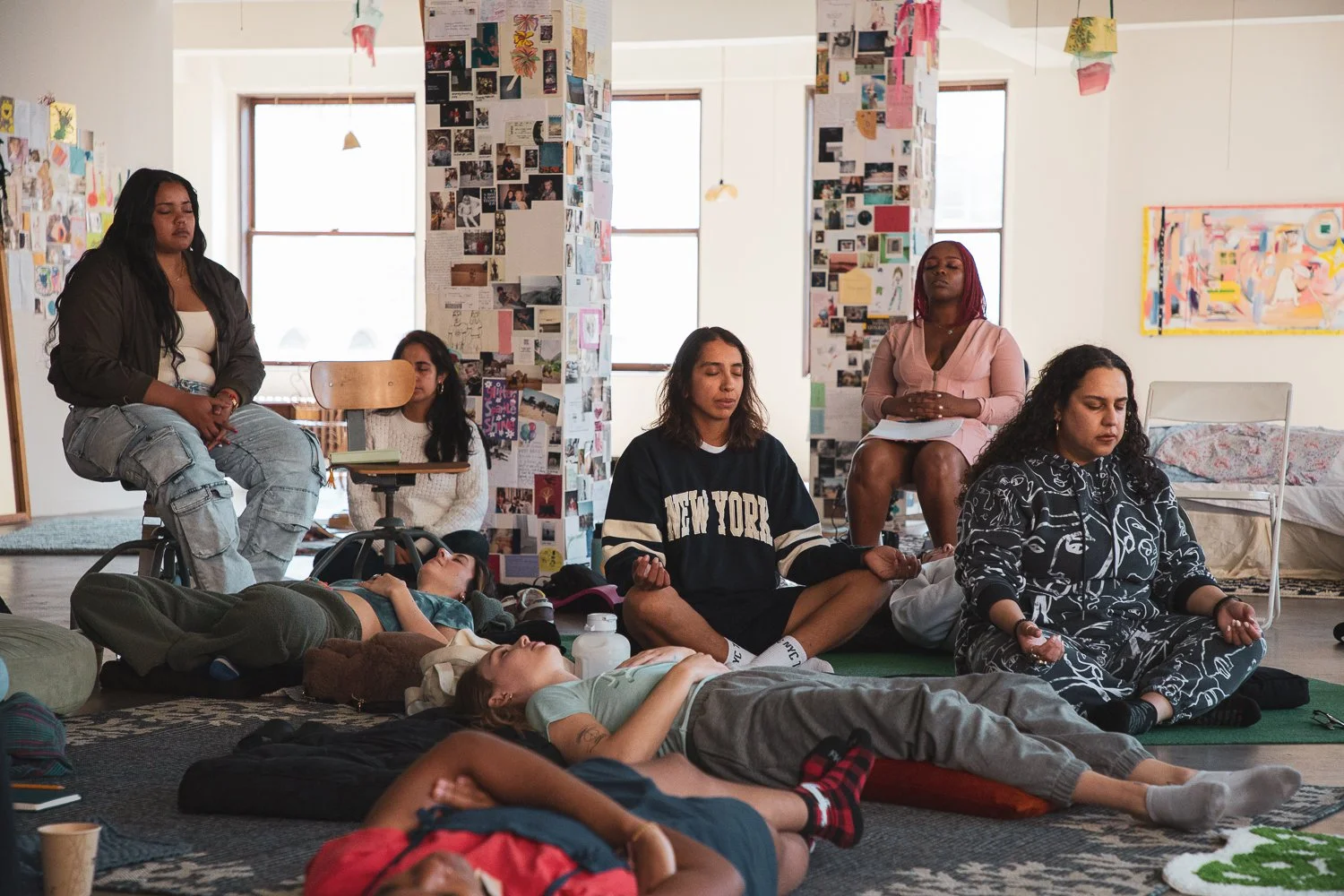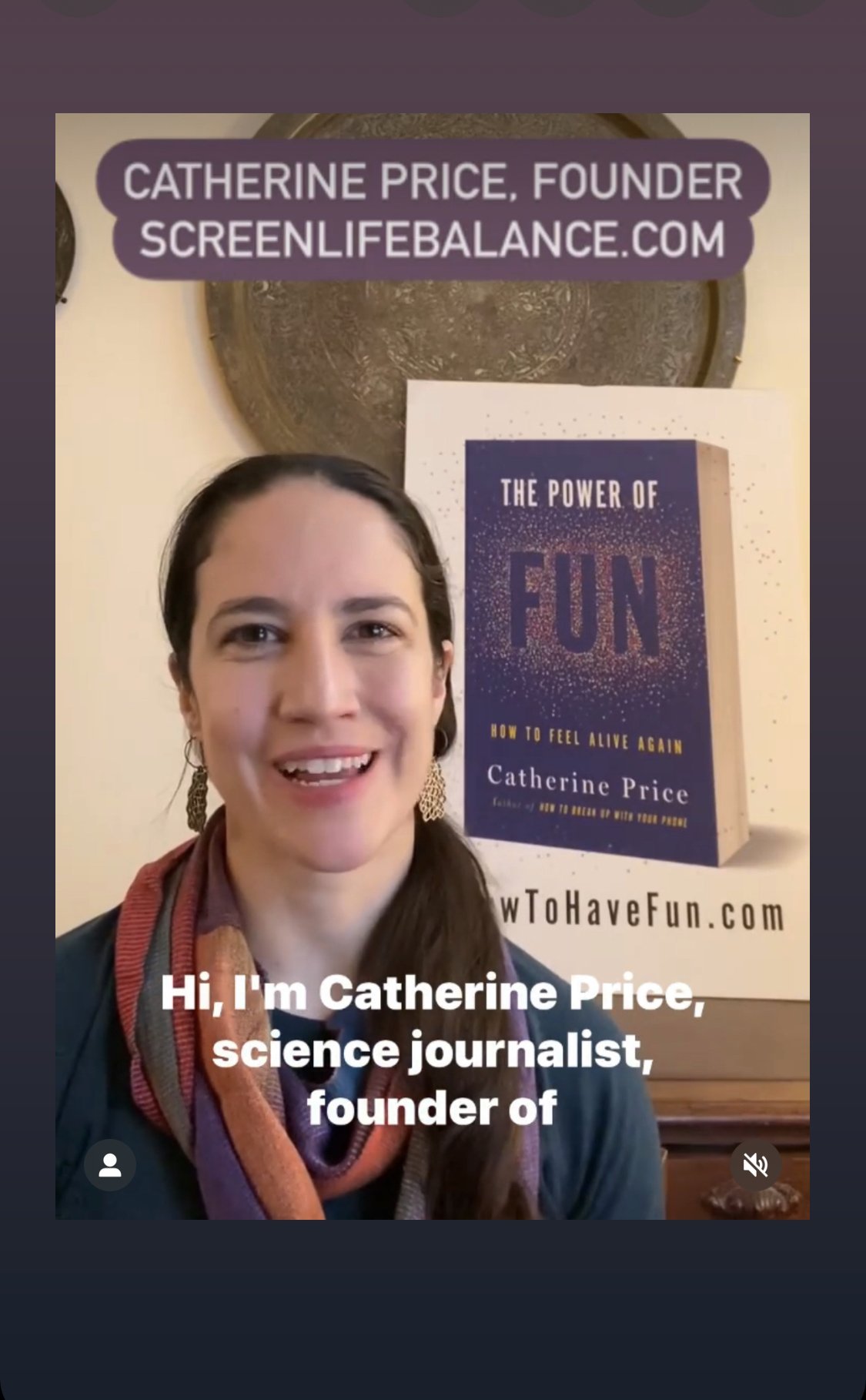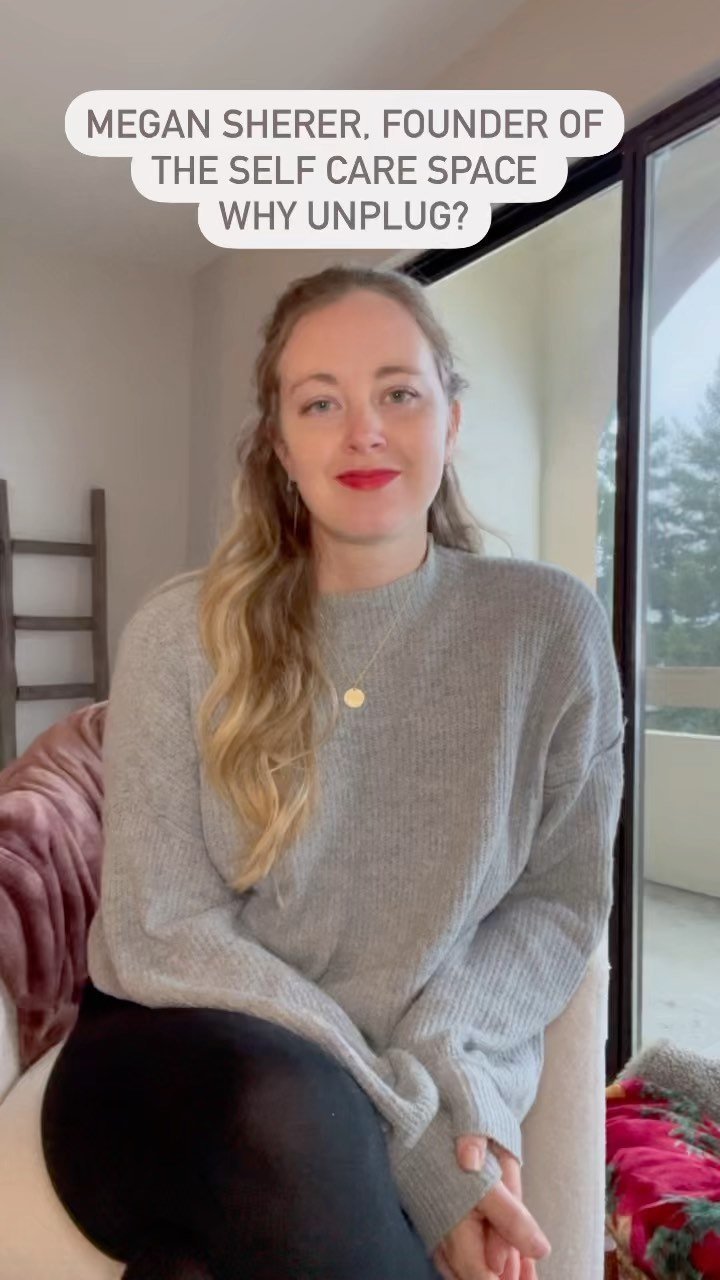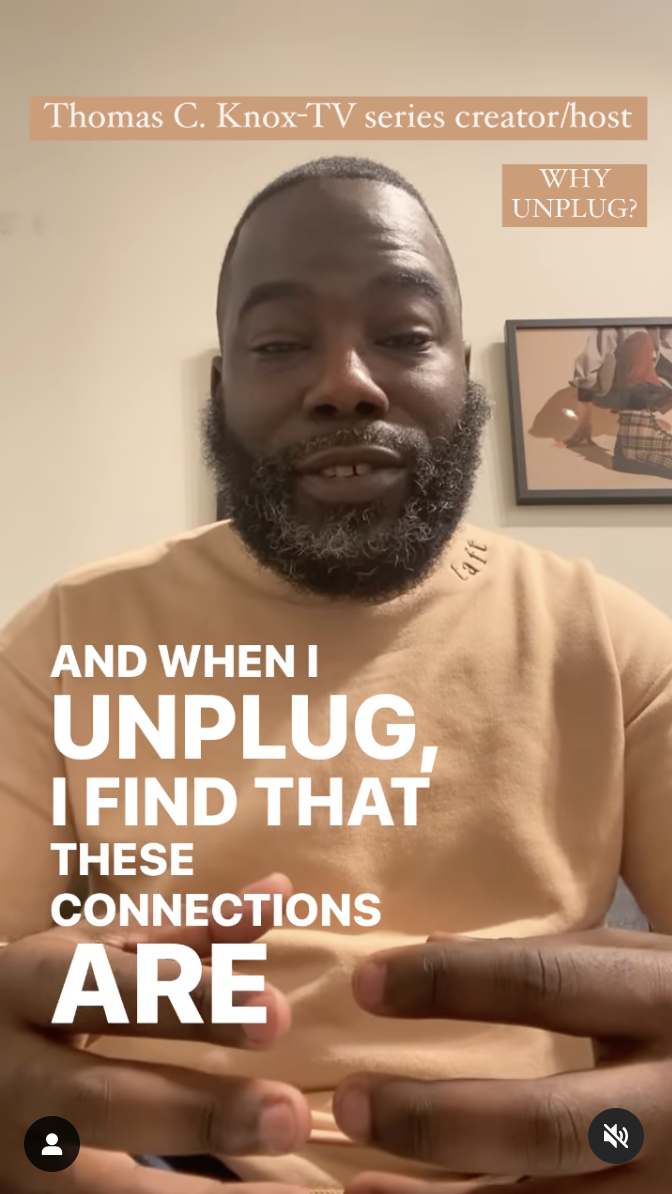
Facts & Findings
Why Unplugging Matters: What Families & Educators Need to Know
Today’s families, youth, and communities are navigating unprecedented levels of disconnection, digital overwhelm, and AI acceleration. The data below paints a clear picture: our lives are becoming more sedentary, isolated, and screen-dependent. It’s impacting health, development, learning, and community connection.
The Connection Crisis
Loneliness & Health
1 in 6 people worldwide is affected by loneliness, with major impacts on health and well-being.
Social connection reduces inflammation, lowers the risk of serious health issues, improves mental health, and prevents early death. It can also strengthen community prosperity.
Research from Dr. Holt-Lunstad shows strong social connection increases the odds of survival by 50%.
Social Media, Mental Health, & Youth Development
When people reduce or cut out social media for 3 weeks their mental health usually improves.
Kids today are significantly less physically active – bike riding rates have dropped by 50% since the 1990s, and only 5% ride frequently.
Teens are delaying “adulting” milestones such as paid jobs, driver’s licenses, and dating. This is called Delayed or Failure to Launch.
The New Digital Childhood
Early Device Exposure
By age 2, 40% of children own their own tablet, increasing to 58% by age 5.
MRI scans show too much screen time under age 5 slows white matter growth, which is critical for language, focus and learning.
Children who have a smartphone by age 12 are at higher risk of depression, obesity and insufficient sleep.
Kids aged 8-18 in the US spend an average of 7.5 hours per day on screens (excluding schoolwork).
75% of Americans ages 17-24 are ineligible for military service due to obesity, mental health issues, or criminal backgrounds.
Always Online
46% of teens say they are online nearly constantly.
58% of tweens and 75% of teens have encountered nudity or sexual content online.
Nearly 1/3 of teens have been exposed to online pornography during the school day.
School Impact
72% of US high school teachers report that cell phones are a major classroom problem.
Wearable devices, AI-enabled devices, and smart tools are introducing new avenues for distraction and academic dishonesty (e.g., AI glasses, pendants, watches, earpieces, smart calculators, smart pens, etc.).
Mental Health & Safety Risks
1 in 5 teens has experienced sextortion.
Since 2021, 36 boys (13-17) have died by suicide due to sextortion scams.
Over 85 “Undress AI” apps exist, many are marketed to youth and have free versions.
Kids today are significantly less physically active – bike riding rates have dropped by 50% since the 1990s, and only 5% ride frequently.
Teens are delaying “adulting” milestones such as paid jobs, driver’s licenses, and dating. This is called Delayed or Failure to Launch.
Adolescent Boys
94% of adolescent boys use social media or online games daily.
Over 85 “Undress AI” apps exist, many are marketed to youth and have free versions.
1 in 5 teens has experienced sextortion.
Since 2021, 36 boys (13-17) have died by suicide due to sextortion scams.
75% of Americans ages 17-24 are ineligible for military service due to obesity, mental health issues, or criminal backgrounds.
Young Men
The number of young men (20-24) who are neither in school nor working has tripled since 1980.
Nearly half of men 18-25 have never approached a woman in person (2024).
Men are 4x more likely to die by suicide and 12x more likely to be incarcerated (2023).
94% of adolescent boys use social media or online games daily.
60% of males ages 18-24 live with their parents.
The Rise & Risks of AI
AI is being woven into daily life at an extraordinary speed.
ChatGPT use grew from 100M users in November 2023 → 800M+ weekly users in October 2025.
Over 1 billion people use AI chatbots regularly.
95% of Americans know about AI. Only 13% feel in control of AI.
72% of US teens have used an AI companion. 52% are regular users.
Bots account for nearly half of all global internet traffic.
MIT EEG research shows that using ChatGPT reduces brain engagement.
A study with 981 participants found that heavy chatbot usage was associated with increased loneliness, emotional dependence, and reduced real-world socialization. The more people used chatbots, the more isolated they became from other people.
Advertising will soon be coming to AI which will add an even deeper layer of manipulation humans need to be aware of.
Resources Beyond GDU
No single organization can tackle the digital well-being crisis alone. We’re not here to be the only voice – we’re part of a collective Unplugged Movement working toward broader, shared solutions. We highlight other organizations because we value collaboration, trust the people doing this work, and want families and educators to have the strongest support available.
We’re proud to stand in this movement, shoulder-to-shoulder with the advocates and leaders below.
Digital Wellness & Parenting Resources
-
Guides, toolkits, advocacy tools, and age-based resources on healthy screen habits for parents, educators, and other professionals.
Kit for early childhood.
Tips for opting out of EdTech in the classroom.
Covers topics like managing screens in school and for teens.
-
Resource library includes age-based ratings, reviews, and digital citizenship resources for families & schools.
-
Jonathan Haidt’s bestselling book The Anxious Generation (TAG) sparked a global conversation that grew into TAG, a movement advancing four new norms to rewire childhood and roll back the phone-based childhood.
Articles
Guides
Community tools
Support for building a phone-free childhood.
-
Documentary series (4 films), lesson plans, family tools, SEL resources, app recommendations, and screen contracts.
-
On-demand courses + coaching on social media, video games, Apple controls, and more.
Approach centered on safety and realistic expectations.
Courses include:
Tweens & Tech
All About Apple
Video Games 101
Snapchat 101
-
Resources for parents advocating against excessive EdTech in the classroom.
-
Toolkits and community organizing resources for going phone-free.
Resources for:
Administrators
Parents
Advocates
-
Toolkits, flyers, community calls, and a phone-free schools database.
-
Tools to help kids build resilience, independence, and real-world skills.
-
Programs that help families prevent screen addiction (social media, video games, pornography, etc.) and prioritize healthy habits.
-
Local movement in Marin County, CA, promoting slower smartphone adoption & in-person gatherings.
-
Policy coalition advocating for legislation reducing smartphone use in schools. They are mobilizing and training state-based coalitions across the country to advocate for distraction-free schools.
-
Parent pledge to delay smartphones until 8th grade.
-
Youth Toolkit (free online textbook), resources, and the “Your Undivided Attention” podcast.
-
Guidance to help families and communities build healthy developmental foundations.
-
Education and resources to build resilience against hypersexualized media
-
K–12 curriculum on spotting mis/disinformation and developing critical thinking.
-
Tools to help families create healthy, connection-first tech rhythms. Frames technology as a tool – never as a replacement for human connection.
Legal & Safety Resources
-
Partnership between the FBI and the public to provide a convenient reporting mechanism for crimes committed over the internet. It is used to report cyber-enabled crimes, frauds, and scams to the FBI.
-
Digital Defenders of Children is a nonprofit that builds technology to protect children from sexual abuse and exploitation. They use technology, research, and partnerships to help identify victims, stop the spread of illegal content, and develop safety frameworks for online platforms and law enforcement.
-
An advocacy group and collective working to hold tech companies accountable for ignoring child sexual abuse on their devices and platforms.
-
A free 24/7 hotline for survivors of image-based abuse (1-844-878-2274) + legal resources.
Their Safety Center also maintains a list of experienced attorneys and individual state laws.
Why Unplugging Matters
We’ve heard a lot of headlines lately that point to the value of taking a break from devices. One of the biggest shifts we’ve seen is the sheer fact that we spend a lot less time with others in person. Teens and young adults have seen the greatest drop but most groups have seen a significant shift in this regard at the same time that we have seen people spending more and more time online.
According to a 2025 report released by Common Sense Media, 40% of toddlers have their own tablet by the time they are 2 years old, and nearly 1 in 4 have a personal cellphone by age 8.
If you have children or grandchildren, you may appreciate this poignant PSA from the Smartphone Free Childhood US campaign.
Author Anne Lamott writes, “Almost everything will work again if you unplug it for a few minutes, including you.” After taking a break from technology as a community, we gain an appreciation for the role that it plays in our lives and we are better equipped to establish healthier tech habits going forward.
Take a listen to some of our advisors and partners explain how screens, devices and social media have had an impact on us.
They answer the question WHY UNPLUG to share a smile, encourage self-care, find better mental health and engage in real conversation.
Research shows that health and human connection have been adversely impacted by overuse of technology.
-
On average, children ages 8-12 in the United States spend 4-6 hours a day watching or using screens. Teens spend up to 9 hours. American Academy of Pediatrics Feb. 2020.
About three-in-ten U.S. adults say they are ‘almost constantly’ online - Pew Research Center, March 2021
Adults 65+ watch the most TV @ 4+ hrs a day -Statista Sept 2, 2022.
-
Six out of 10 adults are concerned about the influence technology has on their relationship with their children, and nearly one out of four wish they had more information about technology and parenting, but don’t know where to turn. Dr. David Schramm with Utah State University Extension
-
Blue Light Issues have been found to:
suppress production of melatonin (hormone that controls your sleep/wake cycle).
keep your brain alert with notifications, chimes, calendar alerts and texts
-
Childhood myopia (near sightedness) has doubled in the last 50 years – USC, January 22, 2016
Obesity/weight gain – study of teens found they are twice as likely to drink a sugary drink each day, to not get enough sleep or exercise and 43% more likely to be obese—compared with teens who spent less time with screen devices - Journal of Pediatrics March 1, 2017
Typical texting tilt - exerts a force on the spine of nearly 50 - 60 pounds
Research of children’s brains found:
kids 2+ hrs a day of screen time, score lower on language and thinking tests.
kids 7+ hrs a day show a thinning of the brain's cortex, which manages critical thinking and reasoning. National Institutes of Health Study – Apr 13, 2021






